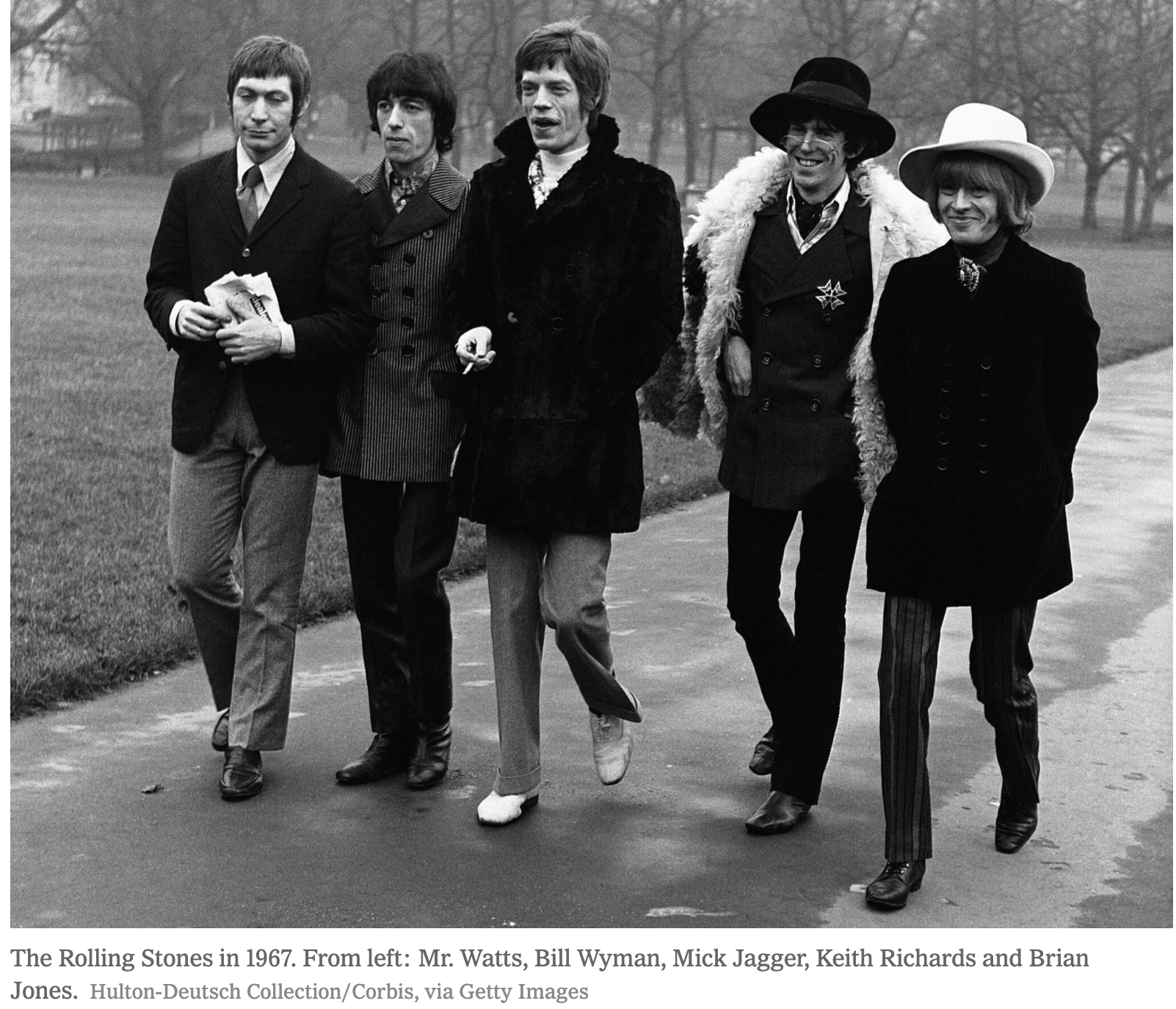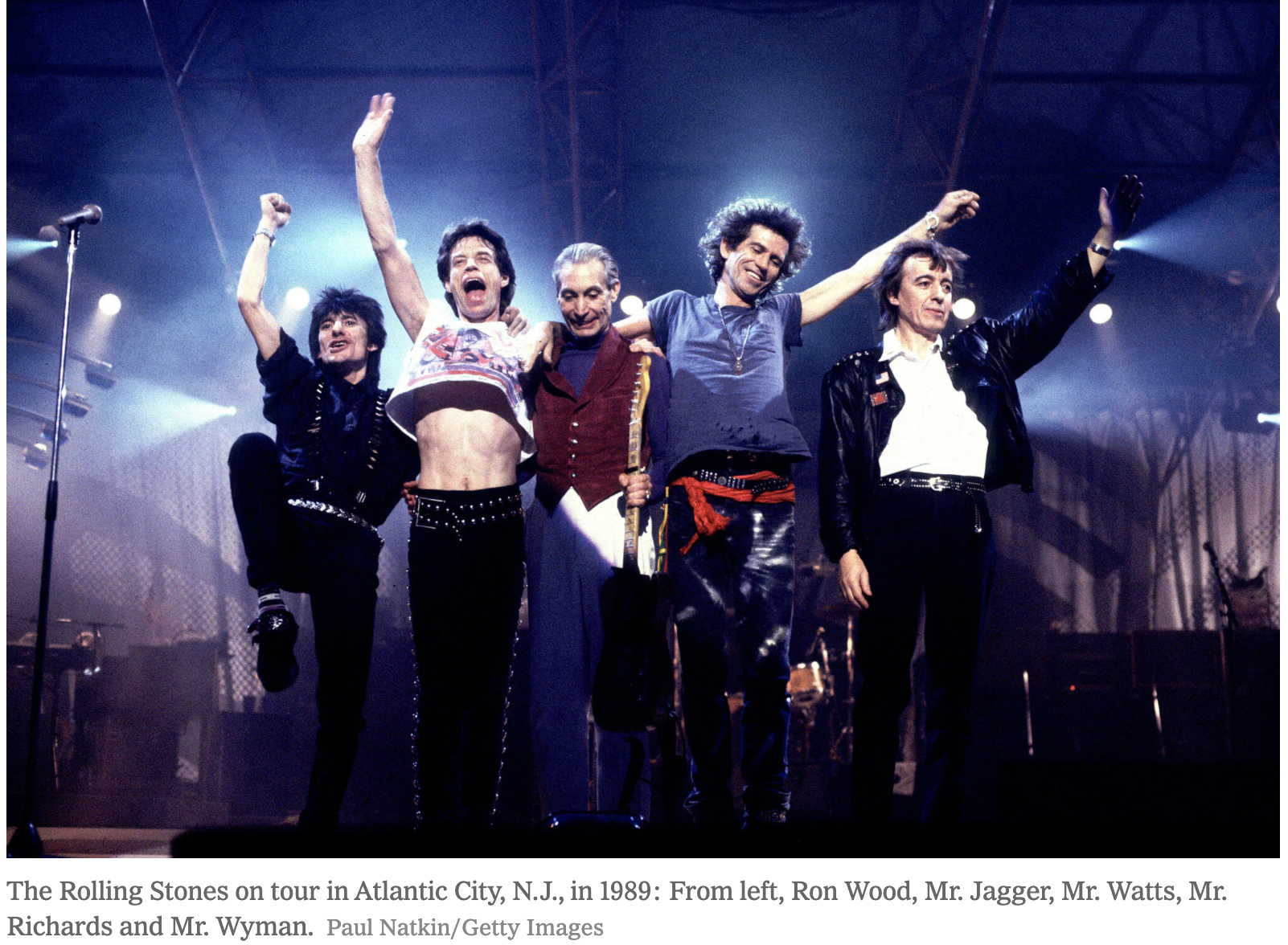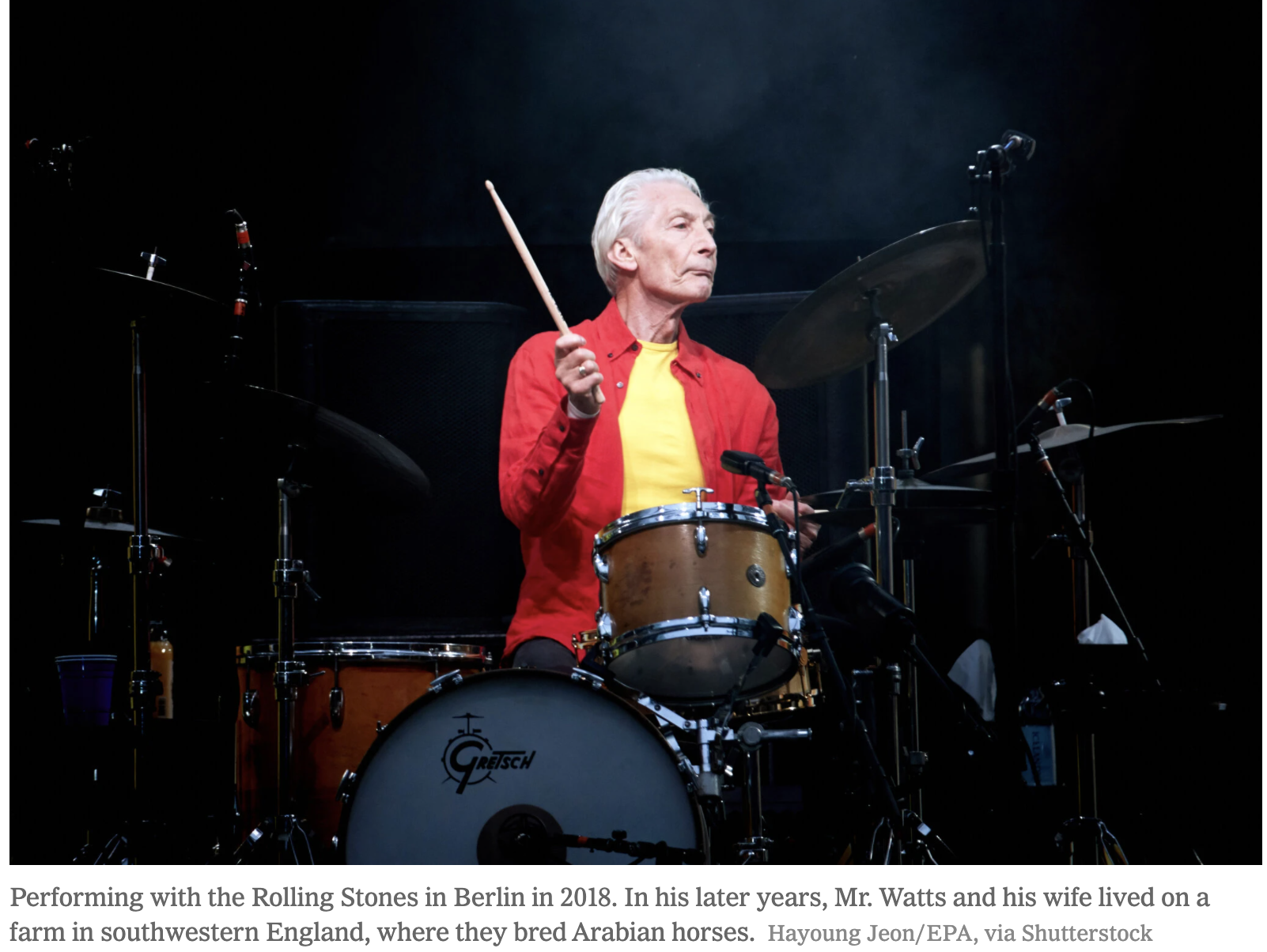The New York Times’ Michiko Katutani writes, “While his bandmates hit the Apollo, the reserved, jazz-loving drummer for the Stones could be found at Birdland.”
In 1960, while working as an artist and graphic designer, and some years before the Rolling Stones were born, Charlie Watts began work on “Ode to a High-Flying Bird,” a captivating children’s book about his hero, the jazz great Charlie Parker. The book featured charming drawings of a bird named Charlie who realized he didn’t sound like most of the other birds, and who left home to fly to New York City, where he played “from his heart” and made a new nest for himself in “Birdland.”
Charlie Parker made a 14-year-old Charlie Watts dream the impossible dream of visiting New York and playing at a jazz club. And while he thought at the time that “the only way to get to New York was in a band on a cruise ship,” he would actually get there in 1964 with the Rolling Stones. While Keith Richards and Mick Jagger hung out at the Apollo, where James Brown was doing five — five! — shows a day, Mr. Watts spent his free time haunting the jazz clubs he’d dreamed about as a boy: He saw Charles Mingus at Birdland, Gene Krupa at the Metropole, and Sonny Rollins, Earl Hines and Miles Davis.
Many decades later, Mr. Watts would achieve his jazz dreams, when he brought his jazz combo to play at the Blue Note, but his day job for almost six decades, of course, was with the Rolling Stones. He was their indispensable drummer, whose loose, jazz-inflected playing and improvisational ardor were the not-so-secret sauce that helped make the Stones such a singular and enduring band.
“Everybody thinks Mick and Keith are the Rolling Stones,” Mr. Richards once observed. “If Charlie wasn’t doing what he’s doing on drums, that wouldn’t be true at all. You’d find out that Charlie Watts is the Stones.” Charlie Watts, Mr. Richards added in his 2010 memoir, “Life,” “has always been the bed that I lie on musically.”
“The engine” was a favorite phrase musicians used to describe Mr. Watts’s role in the band. Also: its motor, its backbone, its heartbeat, its scaffolding, its glue. The soft-spoken Mr. Watts, who died last Tuesday, was more modest, saying he was “brought up under the theory the drummer was an accompanist.” His job, he said, was “to keep the time and help everyone else do what they do,” to lend the music a little “swing and bounce” that would make people get up and dance.
When other drummers started going for bigger and fancier kits, adorned with all sorts of chimes and gongs, Mr. Watts stuck with a small four-piece drum set from 1957 and, unlike Keith Moon and Ginger Baker, he never went in for flash pyrotechnics or showy solos. He loved playing onstage with his mates, but he hated life on the road, hated leaving home, hated the cringe-making trappings of rock ’n’ roll — the parties, the press, the screaming girls. While his bandmates were out late at night, getting into trouble, Mr. Watts was often in his hotel room, sketching pictures of the bed: He told interviewers that he’d drawn every bed he’d slept in on tour since 1967; by 2001, he said, he’d filled 12 to 15 diaries.
For that matter, Mr. Watts said he felt out of place in the whole rock ’n’ roll scene — “I live in TCM world, Turner Classic Movies,” he told a BBC radio show, explaining that he’d inherited his father’s love for 1940s-style tailor-made suits, and regarded Fred Astaire as “the ultimate in what you should be if you’re a professional.”
Indeed, Mr. Watts was a man of contradictions — a jazzman in the world’s greatest rock ’n’ roll band, an old-fashioned gentleman among pirates and bad boys, a homebody who spent much of his work life on the road. It was also his contradictions — his loose, swinging style combined with his love of precision; his idiosyncratic technique combined with his remarkable versatility — that made him such an exceptional drummer, and the perfect musical partner for Keith Richards in forging the Stones’s signature sound.
As the band’s former bass player Bill Wyman recalled: “Every band follows the drummer. We don’t follow Charlie. Charlie follows Keith. So the drums are very slightly behind Keith. It’s only fractional. Seconds. Minuscule.” But it makes the Stones impossible to copy.
The propulsive drive of “Get Off My Cloud”; the manic, percussive beat of “19th Nervous Breakdown”; the gathering sense of menace in “Gimme Shelter”; the jazzy syncopation of “Start Me Up”; the lovely, laconic swing of “Beast of Burden” — all were testaments to Mr. Watts’s gift for modulating the mood of a track to create a musical conversation with Mr. Richards’s galvanic guitar and punctuate Mr. Jagger’s vocals and performance. The drummer had a minimalist’s instinct for how to make the most emotional impact with the most economical of licks, when to withhold and when to step on the gas, and how to effortlessly shift gears between the languid and the urgent, between savage immediacy and elegant formality.
I became a die-hard Stones fan the moment I saw them perform “Time Is on My Side” (in black and white) on the Ed Sullivan Show in 1964. They all wore suits or vests, I recall, except for Mr. Jagger, who wore a preppy crew-neck sweater. That weekend, I persuaded my father to drive me down to Cutler’s record shop in New Haven, Conn., where I bought “England’s Newest Hitmakers.” It was followed, not long after, by “Out of Our Heads” and “Between the Buttons” (which featured an enigmatic comic strip by Mr. Watts), and, in time, every other album the band released, even as vinyl gave way to CDs and CDs to digital downloads.
I made mix tapes of my favorite Stones tracks, and over the years, waited in lines in New York and Chicago and Paris to buy Stones tickets. The Stones were — and remain — a great live band, and no show (or song) was ever the same: “Midnight Rambler” not only waxed and waned in length — from nine to 15 minutes or so — but sometimes felt like old-school Chicago blues, sometimes more like a rock opera or improvisatory jazz. Some renditions of “Jumpin’ Jack Flash” and “(I Can’t Get No) Satisfaction” seemed to set new land speed records, while versions of “Slipping Away” and “Wild Horses” took on affecting new layers of emotional nuance.
This is why the Rolling Stones have endured — why Charlie Watts, who initially thought the band might last three months, gave up counting after three years. They endured because of the depth and complexity of their music, which wasn’t just about “love and hope and sex and dreams,” but also about loss and time and mortality. They endured because of their connection with their audiences, and because, like the blues and jazz greats they grew up idolizing, they continually made their music new.
In his 2019 book “Sympathy for the Drummer: Why Charlie Watts Matters,” the writer and musician Mike Edison wrote: “In many ways, the Rolling Stones at their best were a more intense jazz band than Charlie’s actual jazz bands — when the Stones were cooking, not a lot got played the same way twice. There was more group improvisation.”
“Charlie played more aggressive, out-there jazz in the first four bars of ‘All Down the Line’ and the breakdowns of ‘Rip This Joint’ than with any of his jazz combos. There was more improvising and flashing of chops in ‘Midnight Rambler,’ when things were going right and Keith and Charlie were doing that thing, changing tempos and mashing up crazy shuffle stops, than there were on any quintet session.”
In such moments, Mr. Watts’s usually stoic onstage demeanor — focused, intense, in the zone — would crack into a radiant, boyish grin. “Charlie Watts playing the drums,” his biographer wrote, “is the sound of happiness, the aural equivalent of Snoopy doing his dance of joy.”











